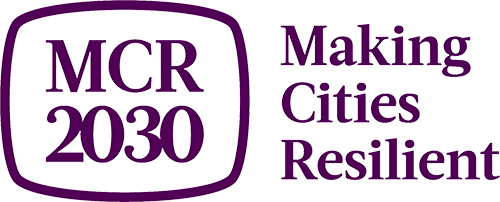Wroclaw invests in natural capital

The eighth feature in this Making Cities Resilient 2030 series, under the theme ‘From Risk to Resilience: Building a Local Climate of Success’, profiles Wroclaw, in Poland
‘We strive to make Wroclaw a resilient and responsible city, ready for the challenges of the future, developing its natural capital, ensuring safety and sustainable socio-economic development for its residents.’This is the climate-resilient vision that Mayor Jacek Sutryk is seeking to co-create in partnership with the city’s population of 642,000 people, the fourth most populous in Poland.
And Wroclaw is maintaining this commitment to climate and disaster resilience during a period in which the city and its citizens have opened their doors and welcomed tens of thousands of refugees from the war in neighbouring Ukraine.
A significant part of Wroclaw’s climate action is guided by its Climate Change Adaptation Plan. The Green Cities for Climate and Water Resilience, Sustainable Economic Growth, Healthy Citizens, and Environments, also known as the GrowGreen project, funded by the European Union’s Horizon 2020 programme, is one such initiative.
The programme focuses on developing nature-based solutions to several of the city’s development challenges. These solutions are founded on a combination of public participation and scientific recommendations. The city authorities, the University of Wroclaw’s Life Sciences Department and citizens have combined in a series of dialogues throughout the initiative.
Green areas constitute 35% of the city and five rivers flow through its boundaries. Uniquely in Poland, Wroclaw has 1,000ha of wetland area that was once irrigated fields that used to serve as a municipal sewage treatment plant.
However, parts of the city are densely populated and built up creating local ‘heat islands’ during periods of hotter temperatures. The city’s downtown, known as Olbin, is one such area and much of GrowGreen’s focus was here.
The redevelopment of Daszynskiego Street is one example of the positive impact the initiative has had. The area has been transformed into a more people-centred community. It includes shaded meeting spaces at intersections for pedestrians, greater areas of the street being given over to shrubs and trees, greater involvement of local businesses in planning, the introduction of paid not free parking zones, as well as speed restrictions on traffic.
The trees and plants selected are native species that are more resilient in the testing urban conditions that include soil salinity, drought, air pollution, poor soil conditions.
Another initiative sees the city combining nature and its architectural heritage in harmony with through the landscaping of its historical courtyards. At one site, the drainage system has been adapted to utilize new green space, such as rain gardens and flower beds, as well as more semi-permeable surfaces. The new drainage system directs water away from nearby tenement houses that have been previously flooded during heavy rains.
In addition, a municipal programme called ‘Grey into Green’ is improving areas around schools, which are being encouraged to unseal playgrounds and create rain gardens, flower meadows and vegetable gardens, the latter being a useful complement to teaching on healthy eating.
Overall, GrowGreen seeks to reduce local temperatures, increase the level of water retention in soil (to manage flood risk), increase the degree of biodiversity, improve air quality; reduce noise pollution and improve the livability of the area.
While the focus has mostly been on the Olbin downtown, all the projects were designed to be scalable in other parts of Wroclaw.
Indeed, the nature-based solutions approach is embedded in the city’s Climate Change Adaptation Plan, as well as the Municipality’s strategic and urban plans. The Wroclaw City Masterplan, the main document that shapes urban development and spatial planning, reflects the growing priority of green development in the city.
These plans have been influenced by the major lessons of the past, not least the massive impact of the severe flooding of 1997.
The city has introduced a policy that all municipal investments must include nature-based solutions. This means the approach is fully mainstreamed into various urban development initiatives and is not a standalone project with a separate budget line.
In addition, the city also has created a provision for citizens to submit applications for funding from the Wroclaw Civic Budget for initiatives such as greening urban areas.
Along its GrowGreen journey, Wroclaw has learnt several lessons. Initially it was difficult to find urban designers familiar with nature-based solutions. The city responded by working with planners (and other sectors of its workforce) to be more able to embrace such an approach.
In terms of public procurement, Wroclaw found that working with small, more local companies proved to be the most effective partnerships for its urban redevelopment.
Establishing a system to recycle discarded materials as a result of redevelopment – such as granite slabs removed during greening work – took some time to be established.
Community engagement was not always straightforward. There have been some instances of vandalism. Parking remains a contentious issue with cars being left in designated green areas. Slowly, though, the attitude of residents is shifting in favour of the green agenda.
Through the challenges, there have been highlights. When families were invited to join municipal workers and project managers to plant flowers and shrubs it became apparent that some residents had never planted anything before.
In one uplifting moment, workers watched as a grandmother and grandson brought their own tree and planted it in the street. The city has also supported residents to cultivate vegetable gardens, with the use for instance, of rainwater barrels.

